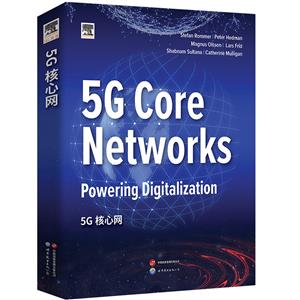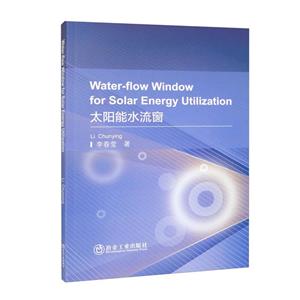
作者:Stefan Rommer[等著]
页数:11,494页
出版社:世界图书出版公司
出版日期:2024
ISBN:9787523211359
电子书格式:pdf/epub/txt
内容简介
《5G核心网》为读者提供了一个对5G核心网架构的全面描述,以及对云技术和3GPP Rel 15/16关键概念的解读。 本书的内容包括:
1. 5G核心网架构概述
2. 独立和非独立架构
3. 5G核心网关键概念的详细阐释
4. 5G无线网和云技术概述
通过学习可以掌握:
1. 5G核心网与前几代核心网的差异
2. 5G如何与之前的网络进行交互
3. 技术选择背后的原因以及哪些处于5G规范的范畴之外《5G核心网》为读者提供了一个对5G核心网架构的全面描述,以及对云技术和3GPP Rel 15/16关键概念的解读。 本书的内容包括:
1. 5G核心网架构概述
2. 独立和非独立架构
3. 5G核心网关键概念的详细阐释
4. 5G无线网和云技术概述
通过学习可以掌握:
1. 5G核心网与前几代核心网的差异
2. 5G如何与之前的网络进行交互
3. 技术选择背后的原因以及哪些处于5G规范的范畴之外
4. 5G规范与前沿的大规模Web技术和虚拟化技术的关系
5. 对协议和服务的详细描述
6. 网络部署的选项
作者简介
斯特凡·罗默(Stefan Rommer),彼得·赫德曼(Peter Hedman),马格努斯·奥尔森(Magnus Olsson),拉斯·弗里德(Lars Frid),沙布南·苏丹(Shabnam Sultana)都是瑞典爱立信的通信专家。凯瑟琳·穆里根(Catherine Mulligan)是英国帝国理工学院加密货币研究与工程中心的创始联合主任。
目录
Foreword
Acknowledgments
1.Introduction
1.1 5G-A new era of connectivity
1.2 A step change
1.3 A new context for operators
1.4 The road to 5G network deployments
1.5 3GPP release 15 and
1.6 Core requirements
1.7 New service grades
1.8 Structure of this book
2.Drivers for 5G
2.1 Introduction
2.2 New use cases
2.3 New technologies
3.Architecture overview
3.1 Introduction
3.2 Two perspectives on 5G Core
3.3 Service-based architecture (SBA)
3.4 The core of the core
3.5 Connecting the core network to mobile devices and radio networks
3.6 Mobility and data connectivity
3.7 Policy control and charging
3.8 5GC interworking with EPC
3.9 Voice services
3.10 Messaging services
3.11 Exposure of network information
3.12 Device positioning services
3.13 Network analytics
3.14 Public warning system
3.15 Support for devices connected over non-3GPP access networks
3.16 Network slicing
3.17 Roaming
3.18 Storage of data
3.19 5G radio networks
4.EPC for 5G
4.1 Introduction
4.2 Key EPC functions
4.3 (Enhanced) Dedicated Core Networks ((e)DECOR)
4.4 Control and User Plane Separation (CUPS)
5.Key concepts
5.1 Architecture modeling
5.2 Service Based Architecture
5.3 ldentiflers
6.Session management
6.1 PDU Session concepts
6.2 PDU Session types
6.3 User plane handling
6.4 Mechanisms to provide efficient user plane connectivity
6.5 Edge computing
6.6 Session authentication and authorization
6.7 Local Area Data Network
7.Mobility Management
7.1 Introduction
7.2 Establishing connectivity
7.3 Reachability
7.4 Additional MM related concepts
7.5 N2 management
7.6 Control of overload
7.7 Non-3GPP aspects
7.8 Interworking with EPC
8.Security
8.1 Introduction
8.2 Security requirements and security services of the 5G system
8.3 Network access security
8.4 Network domain security
8.5 User domain security
8.6 Lawful intercept
9.Quality-of-Service
9.1 Introduction
9.2 Flow based Qos framework
9.3 Signaling of Qos
9.4 Reflective Qos
9.5 QoS parameters and characteristics
10.Policy control and charging
10.1 Introduction
10.2 Overview of policy and charging control
10.3 Access and mobility related policy control
10.4 UE policy control
10.5 Management of Packet Flow Descriptions
10.6 Network status analytics
10.7 Negotiation for future background data transfer
10.8 Session Management related policy and charging control
10.9 Additional session related policy control features
10.10 Charging
11.Network slicing
11.1 Introduction
11.2 Management and orchestration
11.3 Network Slice selection framework
12.Dual connectivity
12.1 Introduction
12.2 Multi-RAT Dual Connectivity overall architecture
12.3 MR-DC: UE and RAN perspective
12.4 MR-DC: Subscription, Qos flows and E-RABS, MR-DC bearers
12.5 Managing secondary RAN node handling for mobility and session management
12.6 Security
12.7 Reporting User Data Volume traversing via SN
13.Network functions and services
13.1 5G core network functions
13.2 Services and service operations
14.Protocols
14.1 Introduction
14.2 5G non-access stratum (5G NAS)
14.3 NG application protocol (NGAP)
14.4 Hypertext transfer protocol (HTTP)
14.5 Transport layer security (TLS)
14.6 Packet forwarding control protocol (PFCP)
14.7 GPRS tunneling protocol for the User Plane (GTP-U)
14.8 Extensible Authentication Protocol (EAP)
14.9 IP security (IPSec)
14.10 Stream Control Transmission Protocol (SCTP)
14.11 Generic routing encapsulation (GRE)
15.Selected call flows
15.1 Introduction
15.2 Registration and deregistration
15.3 Service Request
15.4 UE Configuration Update
15.5 PDU Session Establishment
15.6 Inter-NG-RAN handover
15.7
Acknowledgments
1.Introduction
1.1 5G-A new era of connectivity
1.2 A step change
1.3 A new context for operators
1.4 The road to 5G network deployments
1.5 3GPP release 15 and
1.6 Core requirements
1.7 New service grades
1.8 Structure of this book
2.Drivers for 5G
2.1 Introduction
2.2 New use cases
2.3 New technologies
3.Architecture overview
3.1 Introduction
3.2 Two perspectives on 5G Core
3.3 Service-based architecture (SBA)
3.4 The core of the core
3.5 Connecting the core network to mobile devices and radio networks
3.6 Mobility and data connectivity
3.7 Policy control and charging
3.8 5GC interworking with EPC
3.9 Voice services
3.10 Messaging services
3.11 Exposure of network information
3.12 Device positioning services
3.13 Network analytics
3.14 Public warning system
3.15 Support for devices connected over non-3GPP access networks
3.16 Network slicing
3.17 Roaming
3.18 Storage of data
3.19 5G radio networks
4.EPC for 5G
4.1 Introduction
4.2 Key EPC functions
4.3 (Enhanced) Dedicated Core Networks ((e)DECOR)
4.4 Control and User Plane Separation (CUPS)
5.Key concepts
5.1 Architecture modeling
5.2 Service Based Architecture
5.3 ldentiflers
6.Session management
6.1 PDU Session concepts
6.2 PDU Session types
6.3 User plane handling
6.4 Mechanisms to provide efficient user plane connectivity
6.5 Edge computing
6.6 Session authentication and authorization
6.7 Local Area Data Network
7.Mobility Management
7.1 Introduction
7.2 Establishing connectivity
7.3 Reachability
7.4 Additional MM related concepts
7.5 N2 management
7.6 Control of overload
7.7 Non-3GPP aspects
7.8 Interworking with EPC
8.Security
8.1 Introduction
8.2 Security requirements and security services of the 5G system
8.3 Network access security
8.4 Network domain security
8.5 User domain security
8.6 Lawful intercept
9.Quality-of-Service
9.1 Introduction
9.2 Flow based Qos framework
9.3 Signaling of Qos
9.4 Reflective Qos
9.5 QoS parameters and characteristics
10.Policy control and charging
10.1 Introduction
10.2 Overview of policy and charging control
10.3 Access and mobility related policy control
10.4 UE policy control
10.5 Management of Packet Flow Descriptions
10.6 Network status analytics
10.7 Negotiation for future background data transfer
10.8 Session Management related policy and charging control
10.9 Additional session related policy control features
10.10 Charging
11.Network slicing
11.1 Introduction
11.2 Management and orchestration
11.3 Network Slice selection framework
12.Dual connectivity
12.1 Introduction
12.2 Multi-RAT Dual Connectivity overall architecture
12.3 MR-DC: UE and RAN perspective
12.4 MR-DC: Subscription, Qos flows and E-RABS, MR-DC bearers
12.5 Managing secondary RAN node handling for mobility and session management
12.6 Security
12.7 Reporting User Data Volume traversing via SN
13.Network functions and services
13.1 5G core network functions
13.2 Services and service operations
14.Protocols
14.1 Introduction
14.2 5G non-access stratum (5G NAS)
14.3 NG application protocol (NGAP)
14.4 Hypertext transfer protocol (HTTP)
14.5 Transport layer security (TLS)
14.6 Packet forwarding control protocol (PFCP)
14.7 GPRS tunneling protocol for the User Plane (GTP-U)
14.8 Extensible Authentication Protocol (EAP)
14.9 IP security (IPSec)
14.10 Stream Control Transmission Protocol (SCTP)
14.11 Generic routing encapsulation (GRE)
15.Selected call flows
15.1 Introduction
15.2 Registration and deregistration
15.3 Service Request
15.4 UE Configuration Update
15.5 PDU Session Establishment
15.6 Inter-NG-RAN handover
15.7















